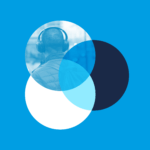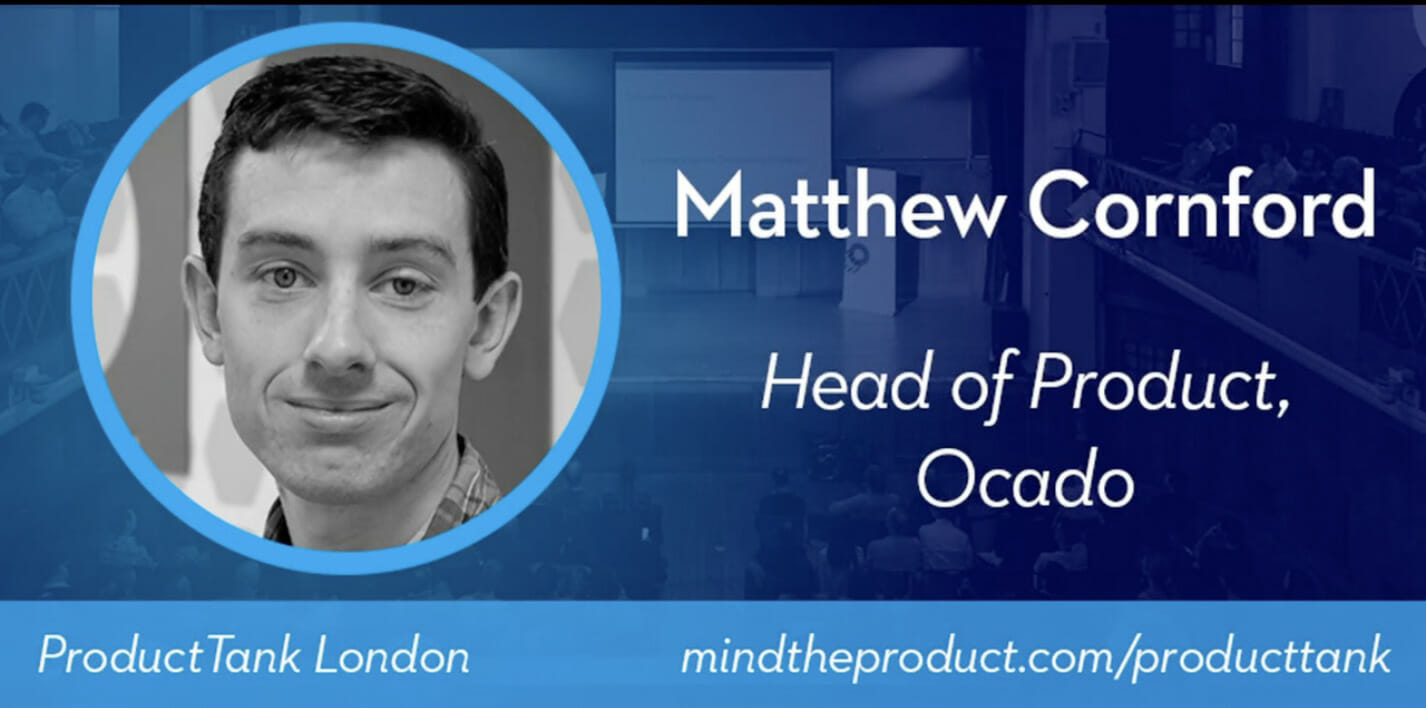Most of our time as product people is spent trying to figure out how to improve things. Every once in a while, we find ourselves where everything seems to work and we’re growing like crazy. Congratulations, you’re in Hypergrowth. While it sounds amazing (and can be), it comes with a separate and unique set of challenges. We talked with Cassidy Fein, Director of Product about how to navigate this environment.
Featured Links: Follow Cassidy on LinkedIn and Twitter | Cassidy’s website | Harvard Business Review article on Blitzscaling | Work with Cassidy! She’s hiring at Vimeo
Episode transcript
Randy Silver:
He Lily, what’s the fastest growing company you’ve ever worked in?
Lily Smith:
Oh, that’s easy. It’s definitely the one I’m in right now Bower collective.
Randy Silver:
That sounds exciting. But are you guys growing? Are you hyper growing? Ah, well,
Lily Smith:
it feels like we’re hyper growing. But I’m not exactly sure what the definition of hyper growth is. But that’s why we’re talking today with Cassidy fine. She’s a veteran of some very fast growing product businesses. And she’s here to give us a guide on how to survive and thrive in hypergrowth.
Randy Silver:
That sounds like a good thing. I’ve heard way too many horror stories about people losing all sense of work life balance in those environments. Can’t wait to hear how she’s managed it. So let’s get right into it.
Lily Smith:
The product experience is brought to you by mind the product.
Randy Silver:
Every week, we talk to the best product people from around the globe about how we can improve our practice, and build products that people love.
Lily Smith:
Because they mind the product calm to catch up on past episodes, and to discover an extensive library of great content and videos, browse
Randy Silver:
for free, or become a mind the product member to unlock premium articles, unseen videos, AMA’s roundtables, discounts to our conferences around the world training opportunities.
Lily Smith:
My new product also offers free product tank meetups in more than 200 cities, and less probably. Hey, Cassidy, so nice to have you here on the podcast today.
Cassidy Fein:
Hey, welcome. I’m so excited to be here.
Lily Smith:
So before we get started with our topic of the day, it’d be great if you could give us a real quick intro into who you are and what you’re doing in the world of product and also your kind of origin story like how you got into it?
Cassidy Fein:
Yeah, well, I am currently a director product at Vimeo, I help kind of grow tools are in our enterprise side of the business as well as our ML and AI related tooling as well. Really exciting stuff. Been there for about a year. I’m also an instructor with my the product. So it’s been about three years. I love teaching both classes for corporate clients, as well as for the public. Most recently, I was able to teach foundations, which is always a lot of fun meeting new PMS or, you know, folks trying to transition into PM. Before that I’ve been in kind of b2b SaaS my whole life. So it was a education, SAS startup that actually recently got acquired for about six years help kind of grow and hone a product team there. And before that, I was at a marketing SAS platform that also recently got acquired, I guess there’s some m&a in the air. And that’s actually where I kind of got started my sort of product journey. I really started as employee number seven, kind of joined with my friend who was an engineer at the time, we both graduated college and realised we didn’t really want to be in the fields that we had studied in, I’d studied film, he had studied engineering better gotten a job at a large engineering company and just wanted like smaller and to kind of, you know, being able to do more. So we joined as employees, and for six and seven, I went, I left about three years later, we were over 300 people across three different offices globally. So it was a really exciting, awesome way to do almost like a mini rotational programme, did a little bit of customer success, a little bit of product, a little bit of QA, a little bit of development, a little bit of HR, which is probably illegal now. But that’s fine. And really, everything in between is able to kind of figure out what I liked what I didn’t like, what I was good at and what I was not good at. So that’s kind of really where I, where I started. And yeah, I think that’s, that’s really neat. So excited to chat with y’all today.
Lily Smith:
Cool. So when you were doing that job, that initial job, obviously growing from, like a team of six or seven, which is almost barely a team to like, 300 people, like did you have any idea when you started in that business? How quickly it was going to grow?
Cassidy Fein:
No, and it’s funny, looking back, we’ve, you know, I’ve kept in touch with some folks and I’m still very close to my friend who I started with. We’ve only really realised how lucky we were and kind of how successful a company was and how I did kind of grow and scale successfully. Versus other folks I spoke to, you know, that have been founders that have worked for other startups that have either just kind of plateaued or you know, ultimately failed and you know, ran out of funding and they actually go do something else. So definitely not I had no idea what I was in for. You know, I think we got really lucky but also we worked incredibly hard and our CEO Oh Shafqat was incredibly smart and driven and worked incredibly hard. So it was a mix of all things. But certainly I didn’t sign on thinking, Yeah, well, you know, we’ll see how this goes in six months and try something else. I just was kind of there for the ride. And it worked out luckily. Yeah.
Lily Smith:
And that’s our topic for today. So you know, what it’s like to work in a hyper growth sort of business? How is kind of like Hyper Growth determined? What does it mean to be in a hyper growth phase?
Cassidy Fein:
Yeah, it’s a great question. So I’ve actually been thinking a lot about that. And I have a concrete kind of not as fun but actually literal definition. And then they have a kind of more softer definition for other folks is hypergrowth is defined by the WF as 40%, or more growth, I think year over year of CAGR or compound annual growth rate. I think 20% range is considered rapid growth, and then anything below 20% is considered normal growth. So it does have a kind of literal financial definition, which is nice. I will also say and kind of my experience with it, you know, it’s not like you’re working somewhere, and then as soon as your CAGR shifts into 40%, you’re like, oh, yeah, it’s hyper growth, everything changes, like, it’s kind of more of a vibe and a feeling sometimes to like, infamy in our last financial filings were around like 34, or 36%, I’d have to double check. But certainly, we’re close enough that I would consider hypergrowth, that just kind of has all that same sort of feelings of, you know, you’re hiring like crazy, you know, all the things you’re working through, just seems like there’s so many juicy problems, and all of them could provide value. It’s really just how you hone in and prioritise on those problems and really validate as quickly and cheaply as possible. So there’s, there’s definition for you. There’s also I guess, the feeling that that’s kind of been my experience. Yeah.
Lily Smith:
And I imagine kind of some of the problems that you’re the challenges that you have when you’re in that kind of hyper growth phase, because a lot of the time, we’re always focused on revenue and driving revenue. But if you’re, you know, by definition, you’re kind of growing, your revenue is just growing month on month at a certain rate, then you’re maybe not so focused on the revenue side of things, but also, but more unlike other challenges within the business to just support that revenue growth and keep it sustainable.
Cassidy Fein:
It’s always a mix of both, right? I mean, ultimately, it’s this funnel of if you are satisfying user problems successfully, that should naturally tie to revenue growth, because ultimately, you’re providing more value for users or users or using your platform in you know, denser ways, in longer ways and more ways, which should naturally kind of tie to a higher growth of revenue, if you have all your kind of models and pricing kind of figured out appropriately. So it’s, I’d say less about focusing directly on the numbers and more of really ensuring you are solving your your personas your users problems as effectively as possible, and kind of where those gaps may be that you can really jump in and tackle right away, if that makes sense. Yeah.
Randy Silver:
For someone who’s not worked in that environment before, you know, coming from another type of company and going into a hyper growth type situation, as it’s crazy, but the opportunities are also fantastic. So it sounds sounds like a good problem to have, from that perspective. How do you deal with the fact that, you know, you’re dealing with any number of prioritisation decisions? But none of them are potentially a bad decision? How do you deal with that?
Cassidy Fein:
Yeah. Yeah, it’s a great, a great way to kind of break that down. Yeah, I think it’s a lot of the same sort of prioritisation strategies apply. It’s more just being aware of being more sensitive to this kind of signals. So these short term signals that we’ll get from, you know, aligning our OKRs, you know, kind of tracking those metrics and health metrics, figuring out what’s working, what isn’t. Those short term signals that can sometimes be kind of a smoke signal, and any other sort of stage of growth can suddenly become a five alarm fire in a company that is in hyper growth. So, you know, any change to your competitive landscape to your users to, you know, any sort of broader changes in your system. I think the kind of recent acquisition of Activision by Microsoft is like a great example of that can become an immediate kind of threat or opportunity, or both overnight. So you really, really need to understand the kind of, you know, where you need to react where you need to potentially kind of pivot hard, you know, versus a more sort of established business area where you have the luxury of kind of seeing it out, maybe during the more casual pivot, maybe sort of hedging your bets in multiple ways. It’s just kind of heightens that sort If need, I would say, if that makes sense.
Randy Silver:
So is it a massive challenge to stick with the strategy and say, Okay, we know where we’re going, we know we’re gonna get the how to get there and just be disciplined? Or, or is it just a matter of not chasing after? Oh, here’s another opportunity that we didn’t think was gonna come. And here’s another one and another one. These could be amazing businesses or generate amazing revenue on their own.
Cassidy Fein:
Yeah, it’s definitely a lot a little ladder. And I think it’s being again, really mindful of having those spaces to analyse and understand. Okay, are we saying no to this for good reason? Or are we saying yes, this for good reason. And again, really making sure you have those concrete business goals and product objectives, because if you don’t, of course, all the shiny opportunities are gonna seem awesome. You can kind of spin up little tiny teams, you can kind of reshuffle people infinitely. You can always ramp up hiring. It is again, just a matter of how do you focus in a time like this? So yeah.
Lily Smith:
So what are some of the other challenges that you have in a rapidly growing business?
Cassidy Fein:
For sure? Others, of course, because you’re in hyper growth, you’re also hiring like crazy. So how do you scale up and make those teams successful as soon as possible? Again, you don’t really have the luxury of kind of months and months of onboarding and kind of setting those norms and expectations or re shifting the storages expectations. You know, I’d say it’s both making sure the people that you’re hiring are comfortable with a little bit of that sort of chaotic landscape. But also ensuring that you have practices around hiring and onboarding that have been ideally well proven, and are kind of fairly flexible and open to improvement iteration as needed. I was really I know impressed. When I on boarded to Vimeo, I’ve also just worked remotely for a really long time. So it’s really exciting to join somewhere and be like, Oh, I already have a laptop. Working, that’s really exciting. So, you know, making sure that you know, treating almost like your onboarding process as a product, there was a lecture I listened to remove and that works works for Walmart’s HR department, that how they treat their onboarding, like a product, basically, development process, and they have a life cycle around it. Because when you’re onboarding literally hundreds of 1000s of people a day, your onboarding process becomes a product. And I would like us to kind of think about that in the same way, just because you need a consistent, you know, positive outcome from that process. And you know, hiring like crazy only makes that that much more obvious.
Randy Silver:
So is there a secret? So if if it’s Meantime, to productivity, for Support Engineer, say, or something like that the first time that product managers are able to make an informed decision for their team? What is there any secrets, any tips, the of things that hacks that hack? Sounds like it’s a cheat, but anything that you’ve seen work really well that you wouldn’t have thought of otherwise?
Cassidy Fein:
Yeah, I like those metrics. I like the idea of a hack. And they gave us like, bad, like, kind of YouTube ads, like 10 ways to like get people. No, there’s no hacks, you know, this really is one of those areas where it’s just, you know, are you do? Do you have a process? Is that process kind of well documented? And as if we’re actually going to following the right checklist? And then of course, like any process, are you actually tracking success? And are you kind of collecting feedback and iterating at the end of it, so we have a really rigorous kind of onboarding flow. And then after 90 days, kind of getting feedback, I get kind of feedback at the manager level, I give feedback at the manager level set kind of broad expectations for six months, and then kind of, you know, one year growth, and then HR does the same for kind of what they could do better, what information is maybe missing? What sort of, you know, kind of creepy crawlies got Unturned over rocks a day 89 of 90, kind of that fun stuff? So yeah, no, no kind of you to be hack, but again, just going to be mindful of what the process is. And are you actually getting feedback and iterating on it and understanding what’s working what isn’t? Yeah.
Lily Smith:
Yeah, that that onboarding experience is so critical to setting that team up for success. And I think also it’s even more challenging with product people and onboarding product people because there’s always so much to learn and so much to get up to speed with and it really, it just, you know, it takes quite a long time to gain all of the knowledge and meet all the team and build the relationships that you need to really get productive so yeah, it’s tricky when that?
Cassidy Fein:
No for sure. And that paired with I fell this one I on boarded. I know every member my team has felt this and they on boarded. There’s this urge, I think to try to build something from day one or to try to fix something you see from day one or to bring in your own sort of assumptions. or experience to say, Oh, this is definitely how it should be, let’s just go do something. And it’s it can be really hard to sit under hands for, you know, a few weeks and really kind of take stock of what the current state of things is before you start committing code or working with teams. So yeah, it’s, it’s, it’s really hard, but it is definitely for the better if you can kind of resist that urge.
Lily Smith:
Yeah, definitely. It’s that product manager thing of like, must deliver value. Yeah. And so you had to at the product challenge that you were going to mention, tell us about that one?
Cassidy Fein:
Yeah, I think the third piece is really just understanding, especially as you continue to grow and scale and understand your existing product market fit or how potentially you want to address new markets, you know, really thinking through, you know, your, again, team’s processes and how ultimately, rigour and consistency will kind of always win over consistency in luck. But that can also be really hard. If you’re in a situation where you need to maybe transform teams, maybe you’re working in a platform where it’s a older product, there’s a kind of really, it’s more mature kind of market area. And then, you know, somehow something shifts, and you kind of move into this hyper growth stage. Or potentially, you’re just kind of working with new people that are maybe from a background where they don’t have a tonne of sort of kind of process in place. I’ve also just especially thinking about, there’s a lot of talk around product process right now, I think Marty’s most recent newsletter has a lot of people talking. But ultimately, again, as you grow and scale, not just on the hiring side, but on the kind of team success side, it really does, that really does need to be kind of, again, some way to understand how are you measuring success? How are you measuring overall health? And how are you kind of pivoting your process or what you’re doing in order to continually drive towards those, and that is, again, done through some kind of process, I don’t think we need to be dogmatic about it. But there just seems to be kind of something there. versus, you know, just sort of hitting the jackpot on one potential kind of feature release or new product, and then tried to kind of chase your tail and have that, again, without any real understanding of why it was successful.
Randy Silver:
You know, I’ve seen it a bunch of times when you’ve got a smaller company. And you as you said, you employ six and seven at net one, it’s very easy to have a shorthand and just a way of oh, I’ll just do it or turning around to talking someone else. And then all of a sudden, you’ve got three squads, and then 10 squads, and you can’t just do things the same way, you’ve got to have the rigour Is there anything that you’ve seen that helps people try and adopt that? Or have you seen places where you just can’t adapt to different way of doing things?
Cassidy Fein:
Yeah, it’s where you can really show the value of some of these things is where I think people really get it like, like, anyone, I think you introduce due process, and especially if you do it a lot at once people get really achieved are like, Why are you making me do this, I don’t really understand this, this is just busy work. This is just making me do this so that you get something out of it, but I don’t necessarily see any value from it. I think it’s where you can really show other teams, you know, even something as simple as, okay, I’m sharing out notes for a meeting or doing a quick like two minute video recording, of talking through what the outcomes were and why it’s relevant to this team, you know, kind of showing value for a process and why the team should then do that themselves as well, further teams can be really helpful. So framing in the way of kind of wide valuable to them and to the broader business and not just do the thing, because we told you to an exec doesn’t feel like reading 1000 different emails or looking through, you know, 40 different JIRA boards is really kind of, I’d say, the first step of that.
Lily Smith:
And one of the assumptions that I’ve got around working in a hyper growth business is that everyone is just like, crazy busy, and working really long hours, and everything is in chaos. So is that true?
Cassidy Fein:
No, you know, certainly, it also means you need to be somewhere where the business has taken the time to set, you know, rules and guidance around. We don’t want you working long hours, we want you we don’t want you working on weekends. You know, again, me or I’m really lucky, we’re very flexible about kind of we have unlimited PTO, I kind of work when I need to and you know, some nights that means working a little bit later starting my day a little bit earlier. I work with teams and Ukraine in India. So kind of having a flex hours is useful. There. It’s less about kind of, I guess everything being in chaos. There’s more being mindful of kind of, again, why you’re doing what you’re doing and kind of Always remembering how it’s providing value. This is actually a great tie in to what I was thinking about with the foundations class I taught with my the product recently of we’re talking about the value of roadmaps and how we’re looking at sort of, you know, problem. First roadmaps or product goals refers to roadmaps versus solution based roadmaps. I think, especially in these kind of scenarios, it’s always helpful to point towards, again, what why you’re doing what you’re doing, and not just kind of getting lost in the sort of feature suck because especially in this sort of escalated sort of environment, it can also be easy to fall into that or just feel like we’re chasing the next feature, or kind of falling into that build trap, I guess. That was the parry? Yeah.
Randy Silver:
Okay. So um, also another question about the environment and when that builds off of roadmaps, actually. So the best values and use cases for roadmaps is building alignment and understanding for teams. And, you know, I’ve always heard that companies that are unsuccessful are breeding grounds for bad politics, but there’s no, the best cure for the for politics is success. Is that actually true? When you’re growing that fast? Is it a healthier, more collaborative environment? Or is it potentially just as ruthless as in a company that’s not doing so? Well?
Cassidy Fein:
Interesting, I don’t know if I necessarily could have to tie those two things to cancer. But you know, I will say, I have just from my personal experience, in both the companies I’ve worked in that have had hyper growth, it really has been more positive, and there have been less silos. So maybe there is something there, you know, maybe this chicken or the egg like you do typically achieve hyper growth through winning together working together more tightly. You know, I’ve seen that or experienced that, as folks are typically more likely to pitch in as needed and kind of get whatever is needed across the finish line. I do think that just kind of comes back to folks are more aware of the broader business goals and kind of what the goals are. And then how that translates into product goals. And kind of the importance of getting that across the finish line. And all working towards that is more important than any single thing you may be working in your own personal silo. So I don’t know I, I guess that has been my experience personally. But I can’t say that’s always the case, for for any business and hyper growth.
Lily Smith:
And when you’re working in in that pace, like do you have to cut corners in order to get things done, like from everything that you’ve said, so far, it sounds like everything actually, is just running much better. Everyone’s way more organised, and doing everything really properly. But I imagine the pace at which you’re moving, you know, sometimes, maybe you do have to cut corners or make compromises. And are there particular areas where, you know, it’s kind of safer to do that, and areas where you’re like, No, we’re definitely not cutting any corners here.
Cassidy Fein:
For sure. Yeah, I think there are areas I think of it less cutting corners, and more just having a comfort of where you can move fast and have a little bit more flexibility in your decisions. It’s that kind of type one versus type two decision making made famous by Amazon, right? Where you have to have comfort as a product manager, you will never be 100%. Right? If you are, it’s definitely too late. So really, feeling confident in making those distinctions of okay, this is a type one problem, we really need to wrestle through this and try to get this right with the information we have available to us now. versus you know what, I just let’s, let’s make a decision. Let’s try this out. This is the key to decisions easily reversible, we will work from this either way, let’s just ensure we have kind of the right tooling to make those learning successful in place and move on. So really being mindful of not wasting time on those two decisions. I think there’s also scenarios especially where you’re in a situation where you may be new to market or in a new tam total addressable market. And my old company, we pivoted a few times. And I learned as part of that sometimes being first to market is better than kind of anything else. So you can kind of set the ground rules for this. These are the norms, these the standards. I’m kind of dabbling in web three stuff recently, it’s been interesting to see that with the launch of Lux rare, which is a new sort of Emmet NFT marketplace, versus the existing competition of open sea. So that’s definitely been a lesson where I’ve seen kind of not necessarily been cutting corners, which is kind of expediting where you may be potentially wouldn’t. Certainly areas where we are not cutting corners as again, that sort of, you know, like you said, just being really tightly organised around, build, measure, learn cycles, it can be really easy to revert to, again, that sort of build trap mentality when you’re under that intense pressure. Just over communicating. I’ve never been in a situation where I’ve slacked someone something or talk to someone or told someone something. You’re like, yeah, Cassidy you told me that before like, Nope, never literally literally never happened. You cannot over communicate it is not a thing. So just be mindful of those, I think as well.
Randy Silver:
So when you’re in the environment where you a, you feel like you’ve got the magic wand, and every decision every quarter things keep getting better numbers are growing. And you feel like the decisions are going well, how do you avoid the dangers of bias around that you get, you know, bias towards where right we go always make good decisions?
Cassidy Fein:
Oh, yeah, that’s a hard question. It can be really hard, I think to be kind of avoid getting caught up in the coolie is that the right term, like, you know, kind of under thinking that, okay, past success will always indicate kind of future success. This will probably sound lame, but again, kind of resting, you know, be mindful of your, not just your OKRs, but also your health metrics and kind of how those are tracking. Broader KPIs will also always be, of course, a better indicator of longer term direction. So are things looking and feeling the way that they should are maybe something’s kind of getting wonky in ways that you’re not super comfortable with. But I hate to be late, but I think it just always goes back to the numbers, because that’s where you can be really unemotional and understand, Okay, how are things looking? I’m also I love jumping in with customers and customer conversations. We have some customers we speak with very regularly and also do regular user interviews around some ideas we’re throwing around, or, of course, kind of existing functionality. And nothing will kind of bring you down to earth faster than jumping into one of those and hearing a customer say, you know, actually, this makes no sense to me, or no, we stopped using this tool, and I really don’t find this valuable anymore. And that, you know, that kind of shakes me to my core. And that will really be a great sort of, if I’m in one of those situations, it’s going to help me level set and understand what are we doing wrong? Or what do we need to address differently?
Lily Smith:
Yeah, that makes a lot of sense. Always great talking to customers? Yeah, yeah. Um, so we’ve talked a lot about kind of how to set yourself up for success in this kind of environment. But what, what kind of things can go wrong? In your experience when you’re in that hyper growth phase? And how do you avoid them?
Cassidy Fein:
Hmm, great question. So I’ve kind of four areas, at least that I’ve kind of thought about. The first comes to mind for my previous company is just sort of chasing funding is going especially feel really hard if you haven’t necessarily found Product Market Fit yet? Or you’re you know, you have and maybe the market is just going to change dramatically overnight. You know, I think this again, just comes back to how you can kind of find that and ultimately focus on your users problems or, you know, jobs to be done. Are you as a business actually solving a problem? Or are you just kind of bending over backwards for this particular round of funding? Because a certain area of you know, business is hot right now a certain kind of competitors hot right now, I think we saw a lot of this recently play out when you know, clubhouse came out, and everyone was like, Oh, my gosh, clubhouse is the cool, hot new thing. And then everyone came out with a kind of audio related tool. And now really, the only one I’ve kind of seen that’s been consistently utilised is Twitter spaces, which makes sense to a certain degree. But yeah, I think it can be really tricky, especially if you’re in some some of these newer markets to avoid that sort of, again, shiny new thing and really focus on what problems are we trying to solve? And ultimately, what problems are we not trying to solve? You can kind of figure out that and avoid that sort of shiny object syndrome. Also, by focusing on those things, as well, you know, another area just sort of lack of communication across teams across silos, or, more broadly, how you can share information across a company as it’s growing again, and scaling like crazy. Ultimately, it’s, you know, like we talked about earlier, giving them a motivation to to do so in a way that’s kind of consistent and scalable. But if those are in place, and you’re still not seeing the communication, where it should be kind of really getting to the root of why that is happening, or they’re not spaces for them to do so do they not understand the value in doing so, you know, is there maybe some apathy around, you know, kind of the problems or focusing on or in a lack of understanding or alignment and what they’re focusing on, you know, and then at the end of the day, also remembering we’re going through a lot right now outside of work and all of that stuff. So,
Lily Smith:
yeah, and I suppose with, with the kind of lack of information sharing and the risks there as well, because we talked earlier about onboarding product people, but a lot of the time the product function is kind of very critical in terms of onboarding Like other functions within the business, so engineering or sales or marketing, and being able to kind of bring everyone up to speed on what the product roadmap is, or you know, what the focus is, what the strategy is, and also how you guys work. So yeah, I can imagine there’s just an awful lot of bringing everyone up to speed all the time on what’s going on.
Cassidy Fein:
It is yeah. And also as product, you’re typically kind of the point of first contact, especially with new hires, like this week, or last week alone, I was recently chatting with some new engineering hires, also some new design hires. So you know, as the product person, you’re always the spokes in the wheel, which is good in most cases, but also, you know, again, can be a lot. Yeah, and I think the last piece I really want to cover is just around a recency bias or confirmation bias, which, you know, Randy and I, we talked a bit about already, but just ensuring the teams kind of have those information gathering and validation systems already built into their processes. So going back to build, measure, learn, not just build, build, build, but our teams, do teams feel like they’re supported in taking time and resources to run proper discovery to, you know, ship low or medium or high fidelity testing and kind of work through the kinks before really committing those, you know, high value resources to broader design, development and shipping. And ensuring that kind of tests are run through the same rigorous processes, other sorts of areas of validation. Really, again, leaning on those is incredibly important.
Randy Silver:
Cassie, this has been really fantastic. As with anything good, anything hypergrowth. We’re running out of time. So I want to ask one last question. So having gone through this a couple of times and working in these fast paced environments, would you do anything different now? Would you want to work in a slower environment? what’s your what’s what kind of pace? Do you like working?
Cassidy Fein:
Yeah, you know, if you’d asked me the be a few years ago, or even, you know, early on in my career, I would have said, No, I’m looking for something more relaxed. But now that I’ve kind of caught the bug. I don’t know if I can work in another environment. It just is so exciting and satisfying to be able to kind of see those immediate positive outcomes and indicators and sort of chase that thrill of growth that’s happening overnight. I feel it as this kind of energy to you know, I mentioned early on in the podcast, it’s not just kind of a cold numbers, cake or definition. It really is about kind of a vibe that you get from everyone you’re working with. And folks feel it too. It’s it really is just exciting. So I don’t I don’t think I could go back. Yeah, I do really just kind of love this this environment in this energy.
Lily Smith:
And they think thanks, Cassidy. It’s been so great talking to you today.
Cassidy Fein:
Yeah, here as well. This was an awesome thank you both.
Lily Smith:
You know, hypergrowth should not be confused with hyperspace.
Randy Silver:
Yes, we’re not going to be the first company to run the Kessel run in less than 12 parsecs.
Lily Smith:
Exactly. And if you are trying to survive and thrive in hyperspace, I would recommend things like spacesuits a spaceship
Randy Silver:
astronaut ice cream
Lily Smith:
come person actually, that’s not going to help.
Randy Silver:
Any duct tape fixes everything?
Lily Smith:
Yeah, and a good cup of tea because I’m English. So I hope you enjoyed this episode. Please like and subscribe. And we’ll see you next time. Haste, me, Lily Smith and me Randy silver. Emily Tate is our producer. And Luke Smith is our editor.
Randy Silver:
Our theme music is from humbard baseband power. That’s pa you thanks to Ana killer who runs product tank and MTP engage in Hamburg and plays bass in the band for willingness to use their music. Connect with your local product community via product tag or regular free meetups in over 200 cities worldwide.
Lily Smith:
If there’s not one Nagy you can consider starting one yourself. To find out more go to mind the product.com forward slash product tank.
Randy Silver:
Product Tech is a global community of meetups during buying for product people. We offer expert talks group discussion and a safe environment for product people to come together and share greetings and tips.










Comments
Join the community
Sign up for free to share your thoughts